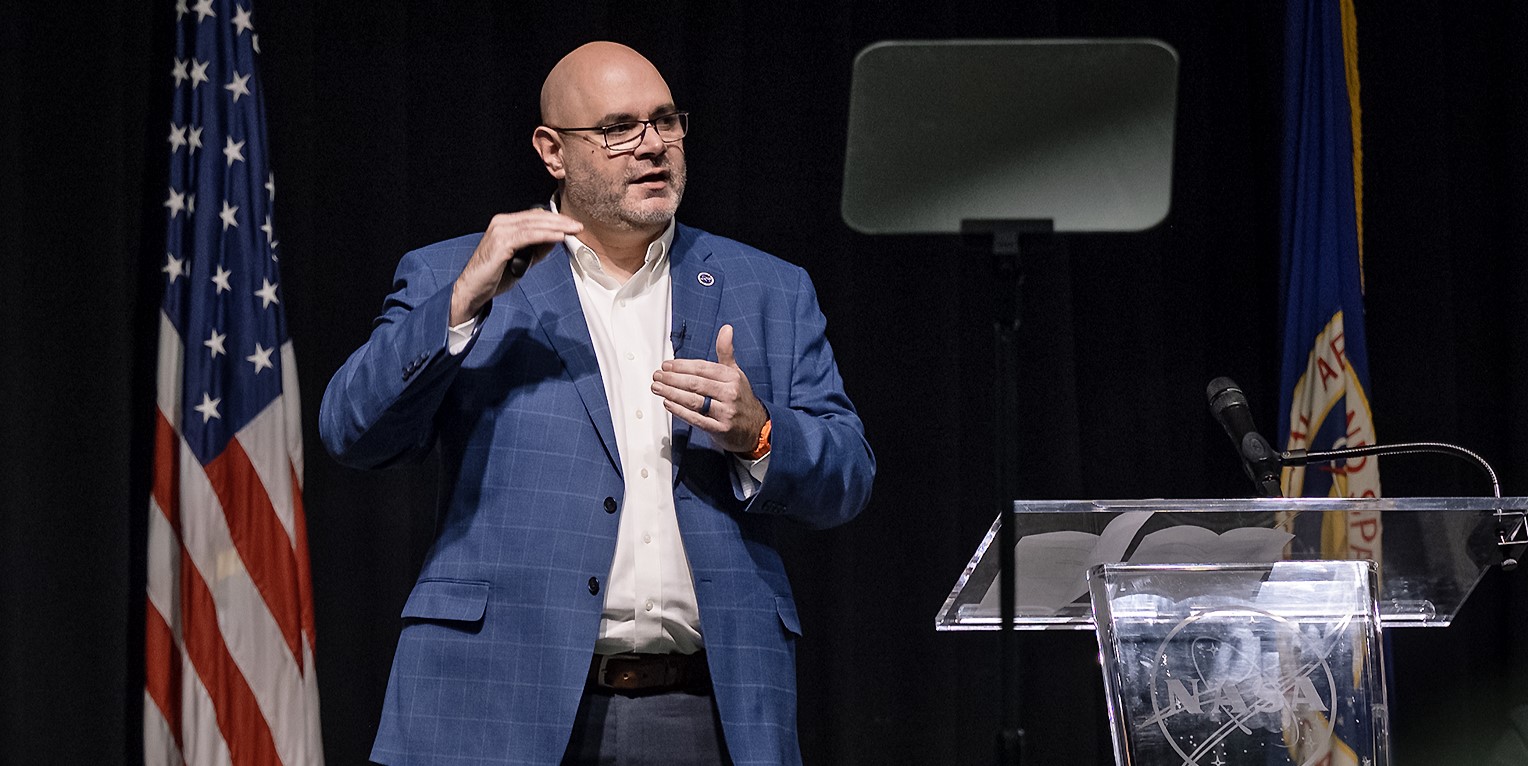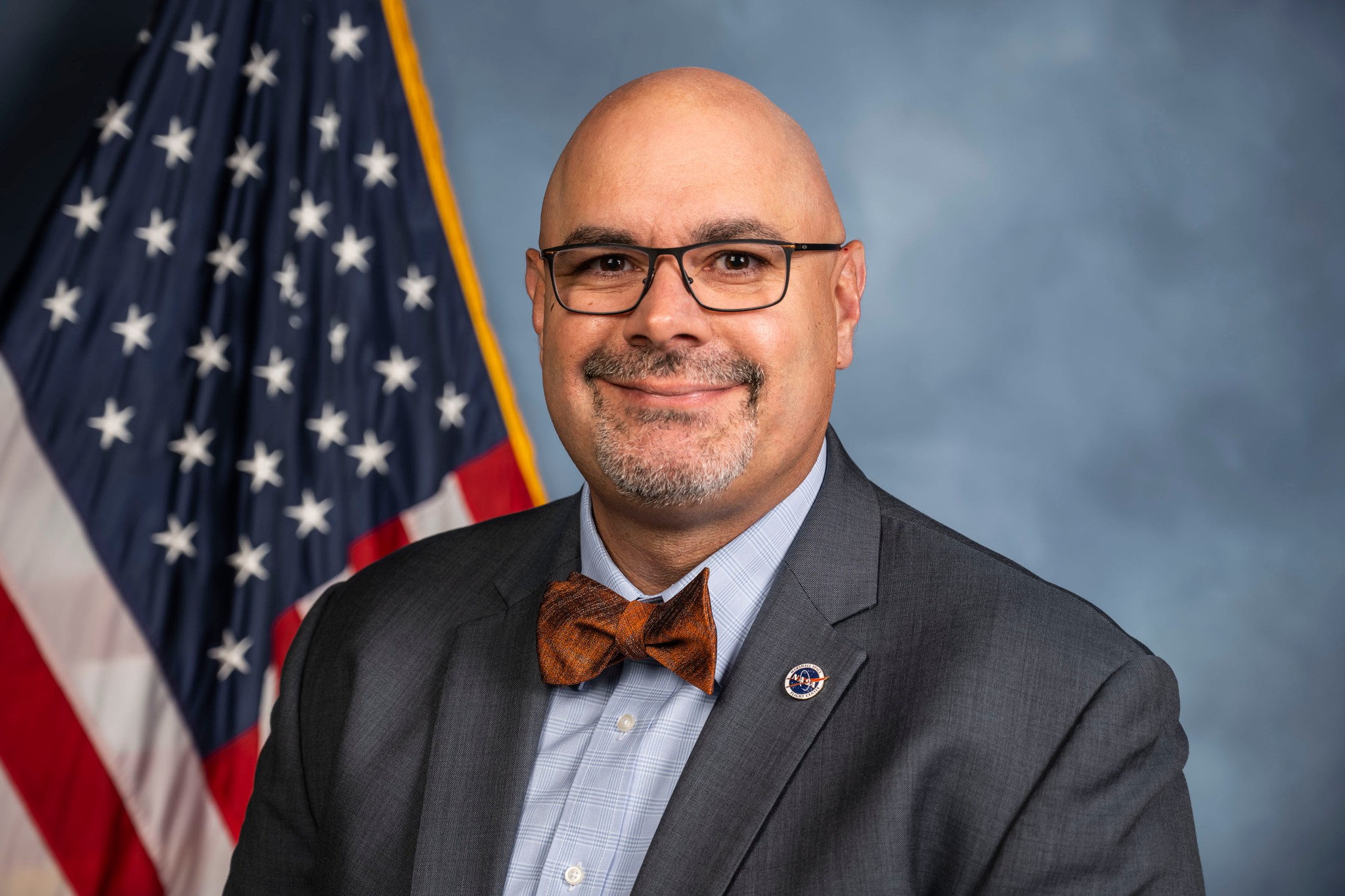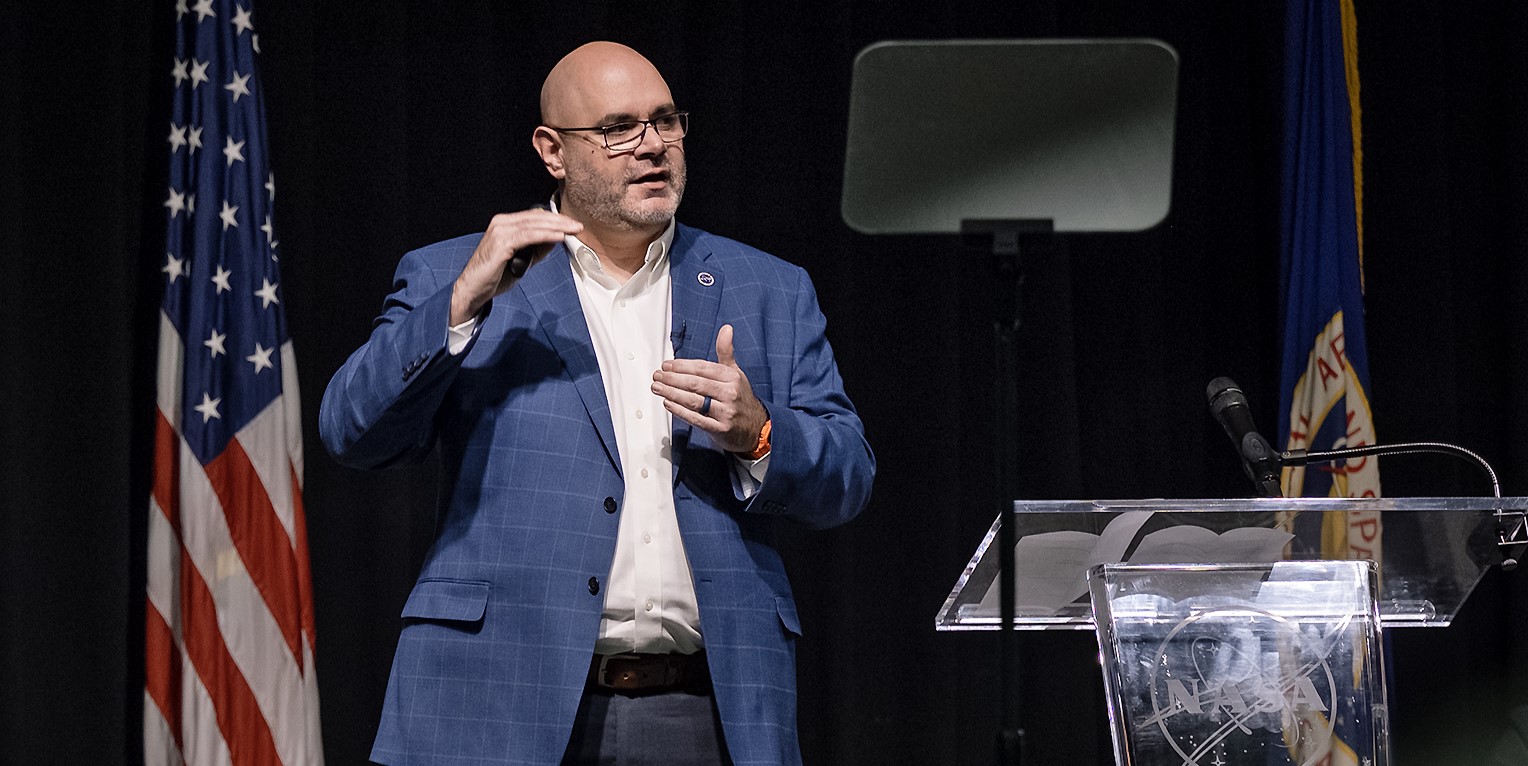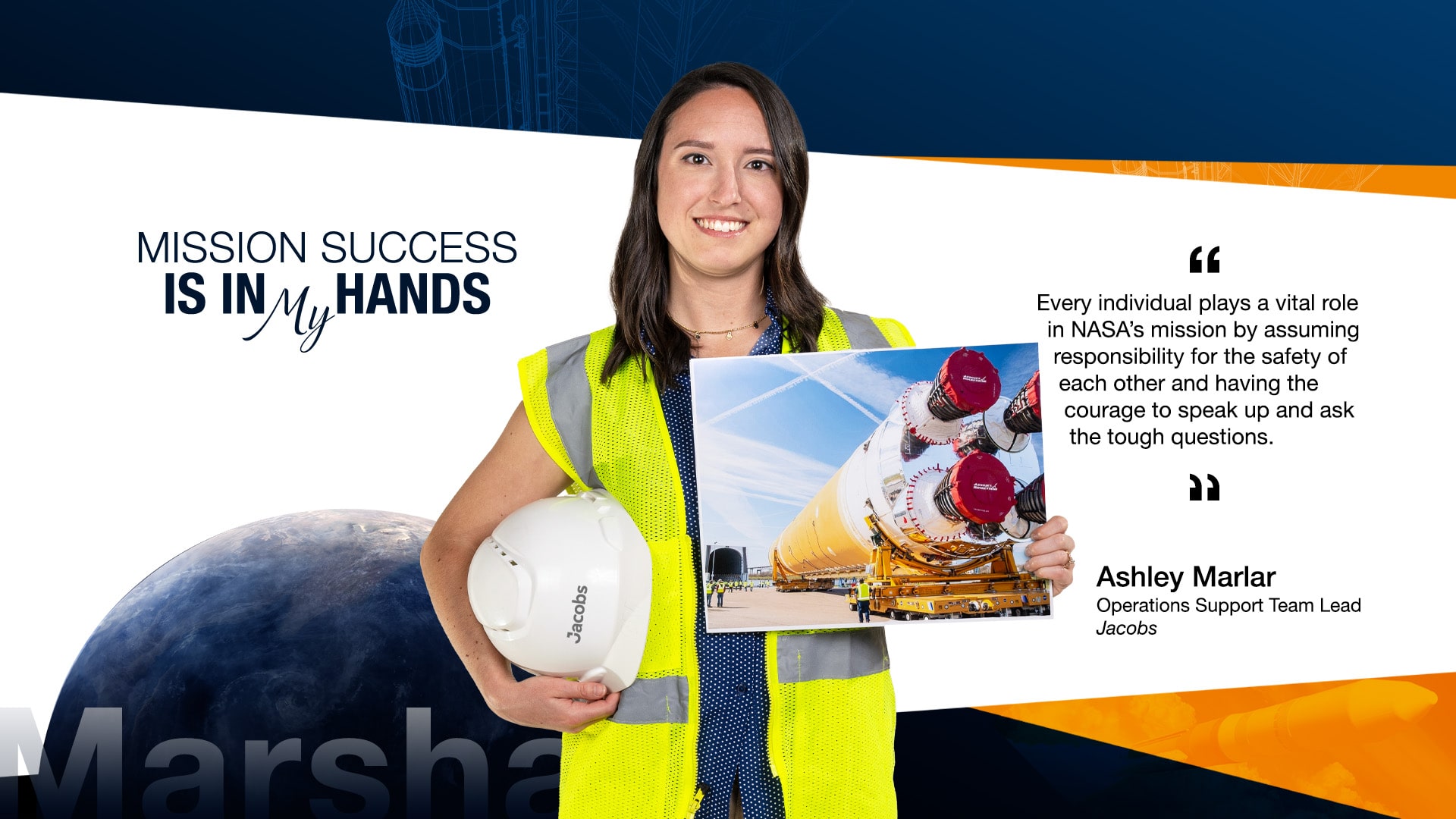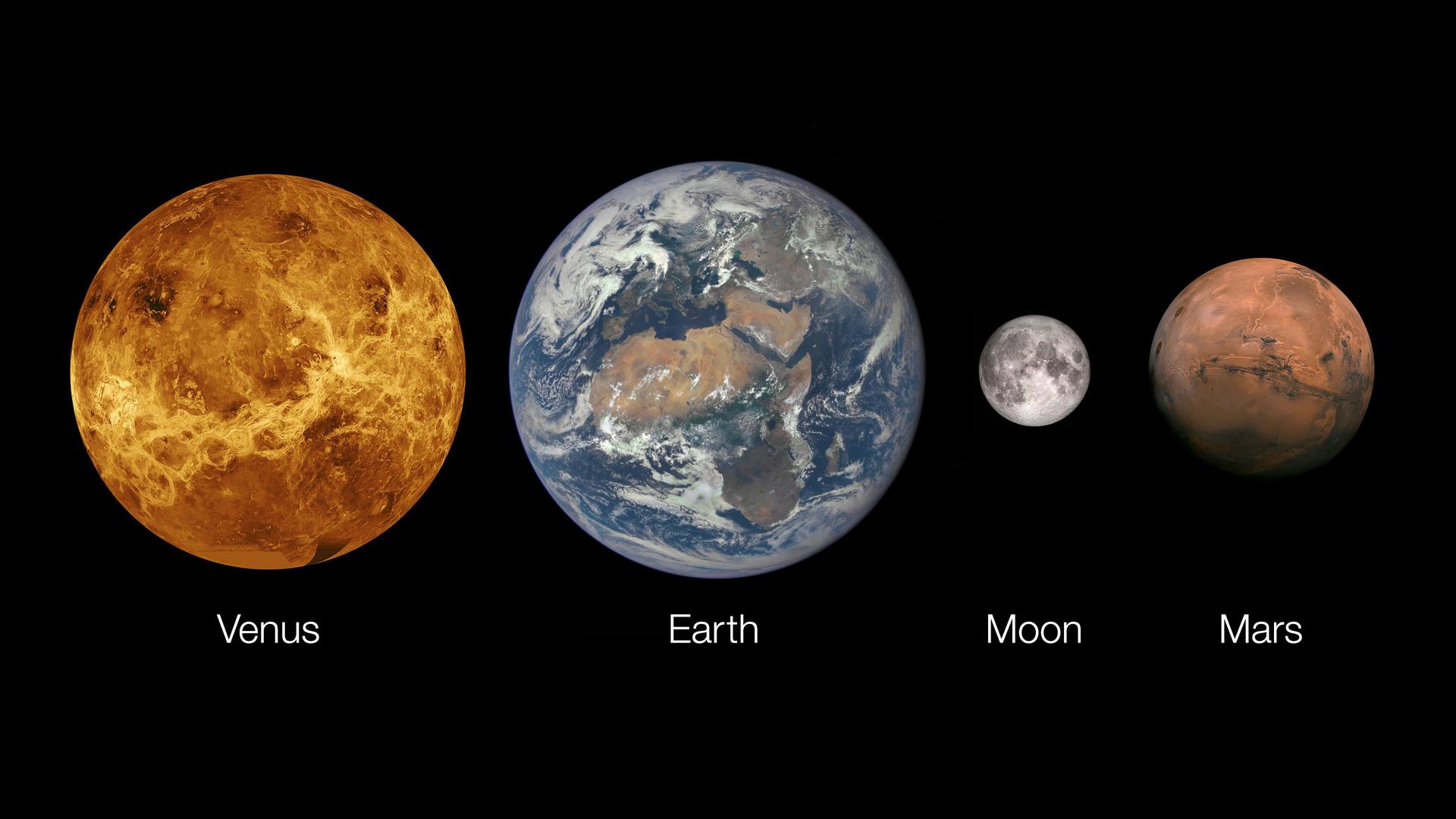NASA Administrator Announces New Marshall Space Flight Center Director
NASA Administrator Bill Nelson on Feb. 5 named Joseph Pelfrey director of the agency’s Marshall Space Flight Center, effective immediately. Pelfrey has served as acting center director since July 2023.
“Joseph is a respected leader who shares the passion for innovation and exploration at NASA Marshall. As center director, he will lead the entire Marshall workforce, which includes a world-renowned team of scientists, engineers, and technologists who have a hand in nearly every NASA mission,” said Nelson. “I am confident that under Joseph’s leadership, Marshall will continue to make critical advancements supporting Artemis and Moon to Mars that will benefit all humanity.”
NASA Marshall is one of the agency’s largest field centers, and manages NASA’s Michoud Assembly Facility, where some of the largest elements of the SLS (Space Launch System) rocket and Orion spacecraft for the Artemis campaign are manufactured. The center also is responsible for the oversight and execution of an approximately $5 billion portfolio comprised of human spaceflight, science, and technology development efforts. Its workforce consists of nearly 7,000 employees, both civil servants and contractors.
“Marshall is renowned for its expertise in exploration and scientific discovery, and I am honored and humbled to be chosen to lead the center into the future,” said Pelfrey. “We will continue to shape the future of human space exploration by leading SLS and human landing system development for Artemis and leveraging our capabilities to make critical advancements in human landing and cargo systems, habitation and transportation systems, advanced manufacturing, mission operations, and cutting-edge science and technology missions.”
Prior to joining NASA, Pelfrey worked in industry, supporting development of space station payload hardware. He began his NASA career as an aerospace engineer in the Science and Mission Systems Office, going on to serve in various leadership roles within the International Space Station Program, the Marshall Engineering Directorate and the SLS Spacecraft/Payload Integration and Evolution Office. He also served as manager for the Commercial Orbital Transportation Services Project at Marshall and the Exploration and Space Transportation Development Office in the Flight Programs and Partnerships Office.
Appointed to the Senior Executive Service in 2016, Pelfrey served as the associate director for operations in Engineering, later becoming deputy manager and subsequently manager for Marshall’s Human Exploration Development and Operations Office. He was appointed as Marshall’s deputy center director in April 2022.
Pelfrey received a bachelor’s degree in Aerospace Engineering from Auburn University in 2000.
Learn more about Pelfrey.
NASA to Demonstrate Autonomous Navigation System on Moon
By Rick Smith
When the second CLPS (Commercial Lunar Payload Services) delivery is launched to the Moon in mid-February, its NASA payloads will include an experiment that could change how human explorers, rovers, and spacecraft independently track their precise location on the Moon and in cis-lunar space.
Demonstrating autonomous navigation, the Lunar Node-1 experiment, or LN-1, is a radio beacon designed to support precise geolocation and navigation observations for landers, surface infrastructure, and astronauts, digitally confirming their positions on the Moon relative to other craft, ground stations, or rovers on the move. These radio beacons also can be used in space to help with orbital maneuvers and with guiding landers to a successful touchdown on the lunar surface.
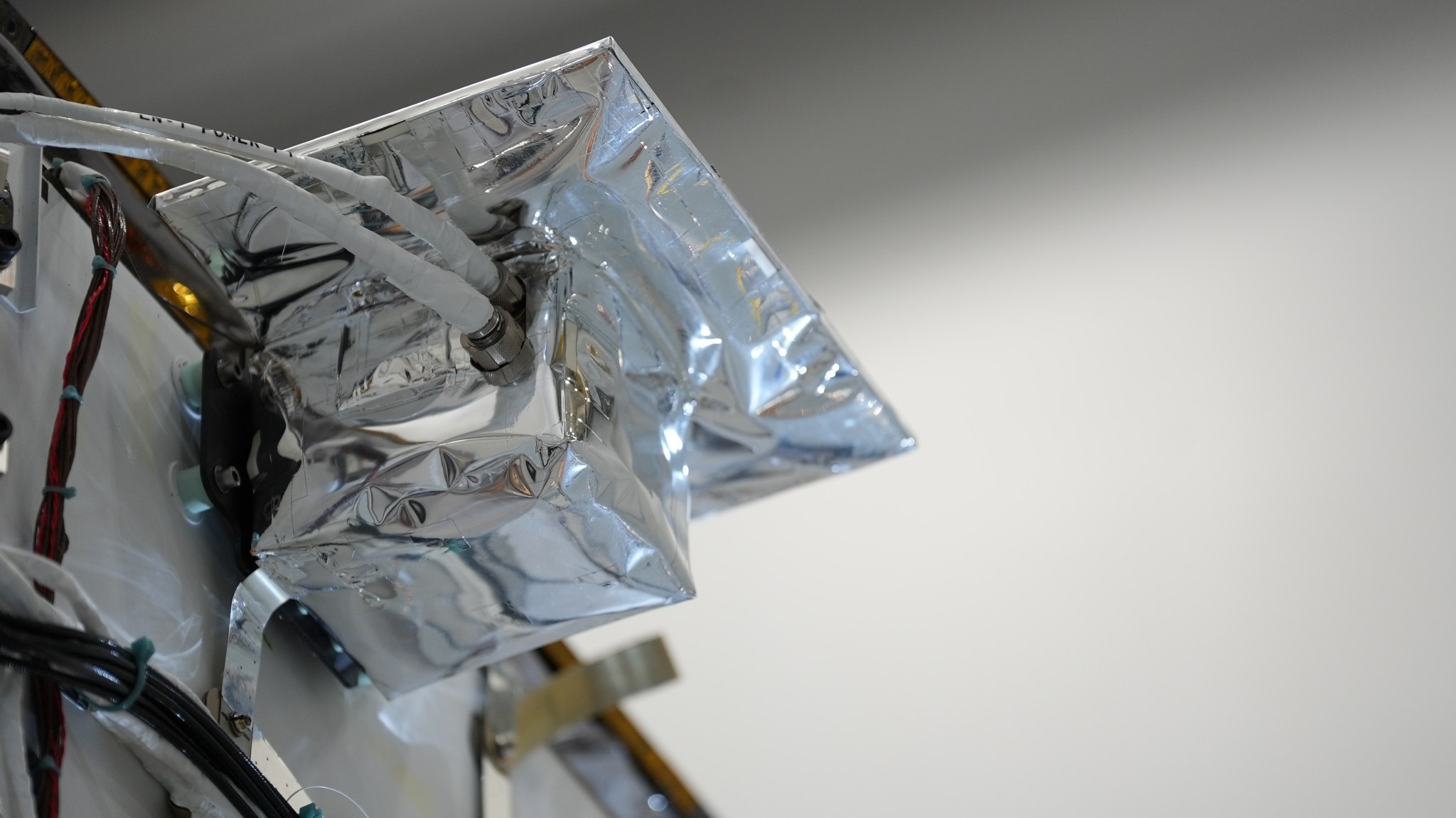
“Imagine getting verification from a lighthouse on the shore you’re approaching, rather than waiting on word from the home port you left days earlier,” said Evan Anzalone, principal investigator of LN-1 and a navigation systems engineer at NASA’s Marshall Space Flight Center. “What we seek to deliver is a lunar network of lighthouses, offering sustainable, localized navigation assets that enable lunar craft and ground crews to quickly and accurately confirm their position instead of relying on Earth.”
The system is designed to operate as part of a broader navigation infrastructure, anchored by a series of satellites in lunar orbit as being procured under NASA’s Lunar Communications Relay and Navigation Systems project. Together, future versions of LN-1 would utilize LunaNet-defined standards to provide interoperable navigation reference signals from surface beacons as well as orbital assets.
Currently, navigation beyond Earth is heavily reliant on point-to-point services provided by NASA’s Deep Space Network, an international array of giant radio antennas which transmit positioning data to interplanetary spacecraft to keep them on course. These measurements typically are relayed back to Earth and processed on the ground to deliver information back to the traveling vehicle.
But when seconds count during orbital maneuvers, or among explorers traversing uncharted areas of the lunar surface, LN-1 offers a timely improvement, Anzalone said.
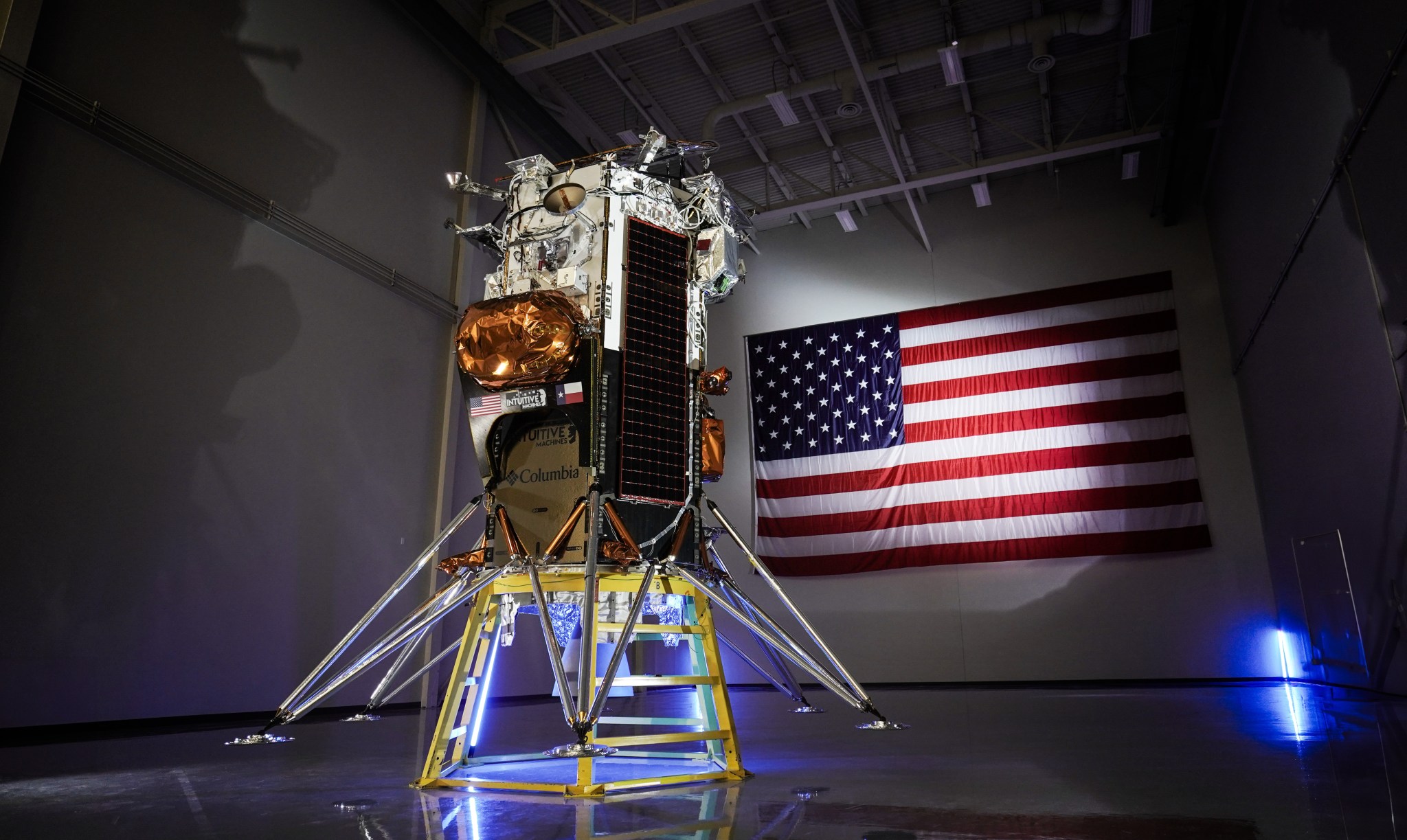
The CubeSat-sized experiment is one of six payloads included in the NASA delivery manifest for Intuitive Machines of Houston, which will be launched via a SpaceX Falcon 9 from Cape Canaveral, Florida. Designated IM-1, the launch is the company’s first for NASA’s CLPS initiative, which oversees industry development, testing, and launch of small robotic landers and rovers supporting NASA’s Artemis campaign.
The Nova-C lander is scheduled to touch down near Malapert A, a lunar impact crater in the Moon’s South Pole region.
LN-1 relies on networked computer navigation software known as MAPS (Multi-spacecraft Autonomous Positioning System). Developed by Anzalone and researchers at Marshall, MAPS was successfully tested on the International Space Station in 2018 using NASA’s Space Communications and Navigation testbed.
Engineers at Marshall conducted all structural design, thermal and electronic systems development, and integration and environmental testing of LN-1 as part of the NASA-Provided Lunar Payloads project funded by the agency’s Science Mission Directorate. Anzalone and his team delivered the payload in 2021, having performed the payload build during the COVID pandemic. Since then, they refined the operating procedures, conducted thorough testing of the integrated flight system, and in October 2023, oversaw installation of LN-1 on Intuitive Machines’ lander.
The payload will transmit information briefly each day during the journey to the Moon. Upon lunar touchdown, the LN-1 team will conduct a full systems checkout and begin continuous operations within 24 hours of landing. NASA’s Deep Space Network will receive its transmissions, capturing telemetry, Doppler tracking, and other data and relaying it back to Earth. Researchers at NASA’s Jet Propulsion Laboratory and at Morehead State University in Kentucky also will monitor LN-1’s transmissions throughout the mission, which is scheduled to last approximately 10 days.
Eventually, as the technology is proven and its infrastructure expanded, Anzalone expects LN-1 to evolve from a single lighthouse on the lunar shore into a key piece of a much broader infrastructure, helping NASA evolve its navigation system into something more akin to a bustling metropolitan subway network, wherein every train is tracked in real time as it travels its complex route.
“Spacecraft, surface vehicles, base camps and exploratory digs, even individual astronauts on the lunar surface,” Anzalone said. “LN-1 could connect them all and help them navigate more accurately, creating a reliable, more autonomous lunar network.”
Marshall’s LN-1 team is already discussing future Moon to Mars applications for LN-1 with NASA’s SCaN (Space Communications and Navigation) program – which oversees more than 100 NASA and partner missions. They’re also consulting with the European Space Agency and Japan Aerospace Exploration Agency, aiding the push to unite spacefaring nations via an interconnected, interoperable global architecture.
“Eventually, these same technologies and applications we’re proving at the Moon will be vital on Mars, making those next generations of human explorers safer and more self-sufficient as they lead us out into the solar system,” Anzalone said.
NASA’s CLPS initiative enables NASA to buy a complete commercial robotic lunar delivery service from leading aerospace contractors. The provider is responsible for launch services, owns its lander design, and leads landing operations. Learn more here.
Smith, an Aeyon/MTS employee, supports the Marshall Office of Communications.
Marshall Wraps Up Mentoring Month with Mega Meal, Mentoring Panel
By Jessica Barnett
There was no shortage of opportunities in January to learn about the benefits of mentoring from those who have experienced them firsthand. In fact, there was so much to share, team members at NASA’s Marshall Space Flight Center kept the celebration going through the first week of February.
“It was so great to see so many from our workforce out and excited about mentorship,” said Selina Salgado, who serves as the Mentoring Program coordinator at Marshall. “At every event throughout the month and when reading through the highlights, I was encouraged by the engagement and commitment that the Marshall team showed for development.”
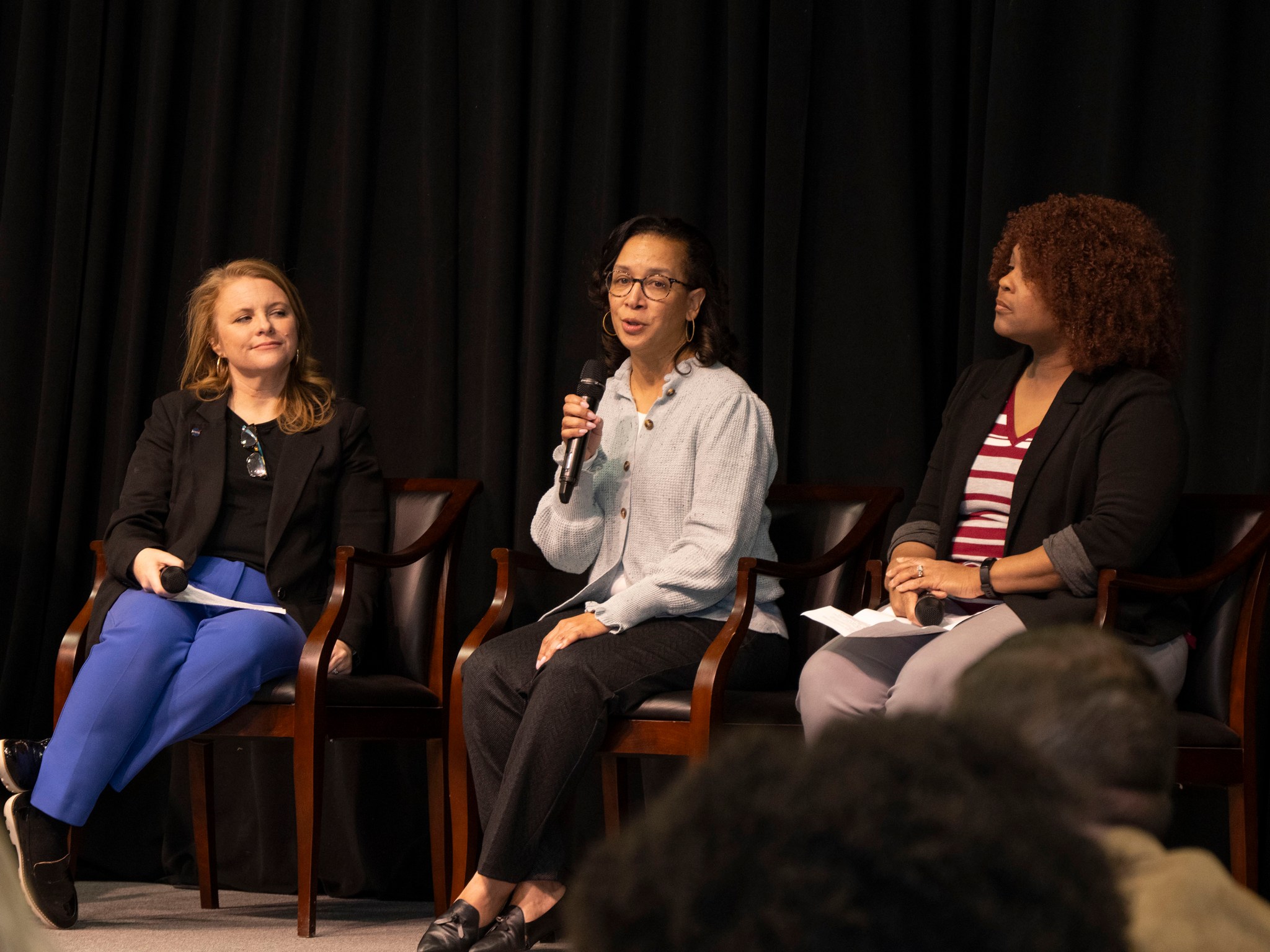
This year’s events included Meals with Mentors, in which team members could have lunch and chat with mentors from a variety of backgrounds and departments, and an in-person mentoring panel Feb. 6 featuring Marshall Chief Financial Officer Rhega Gordon and two of her mentees, Marshall Sustainability Coordinator Malene McElroy and program specialist Kim Henry.
Marshall also participated in the launch for AMPED (Agencywide Mentoring Pilot for Engagement & Development), which pairs mentors and mentees together using the MentorcliQ platform. Civil servants can sign up for AMPED now through Feb. 19.
Marshall team members can also participate in MERGE, a NASA-built mentoring application that allows users to create and view profiles to identify potential mentors or mentees. MERGE is recommended for casual, informal, or short-term mentoring relationships, as well as shadowing opportunities. Civil servants and contractors can sign up at any time.
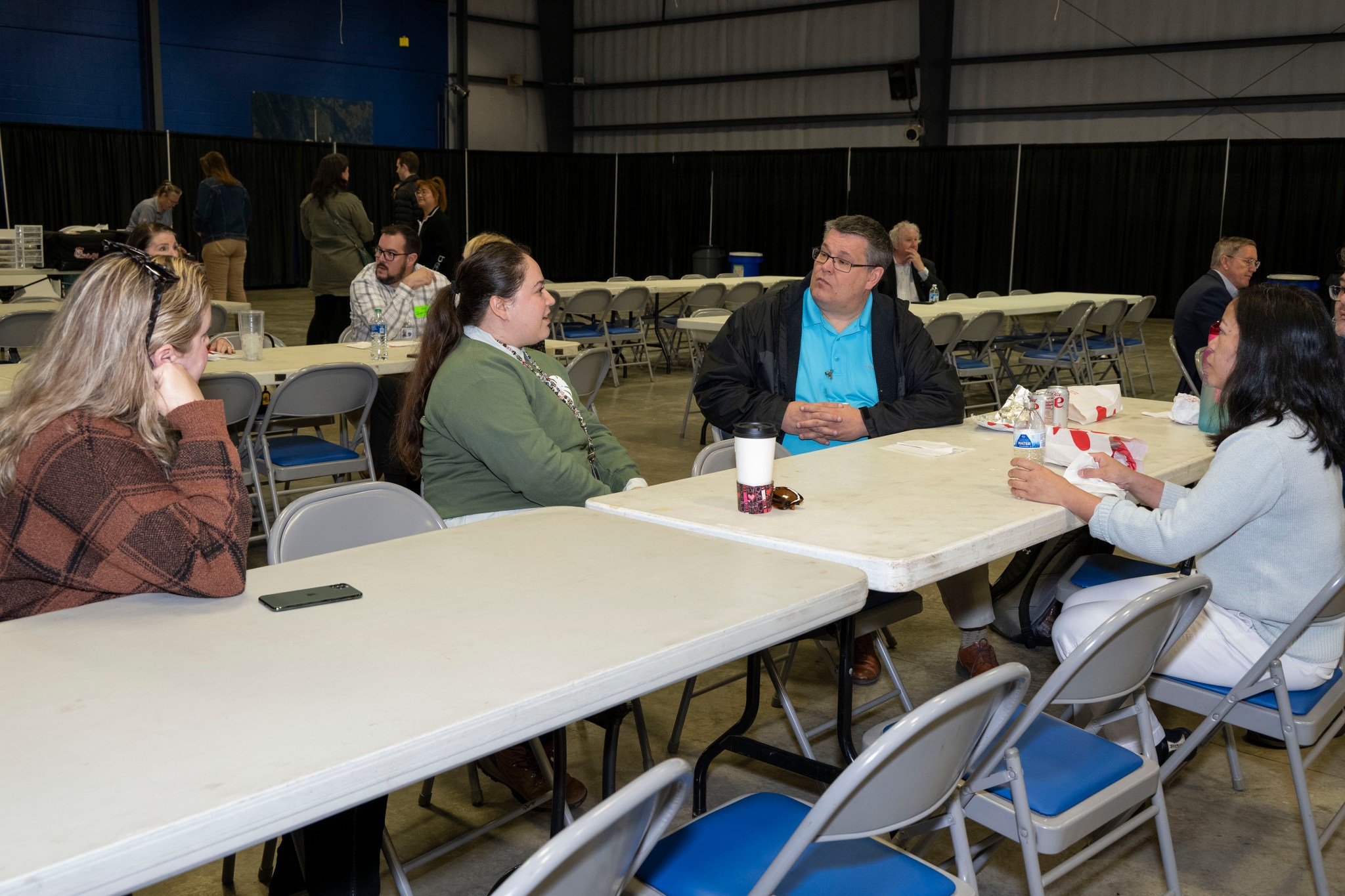
In addition to in-person events and showcasing new options for finding a mentor or mentee, there were weekly tips to help team members get the most out of their mentorship journey and interviews with mentors and mentees, who shared their experiences, advice, and more.
“Our hope was that employees would reengage with mentorship, find value in their current relationships, or provide resources and guidance to help those who were new to the world of mentoring,” Salgado said.
Marshall team members can start or continue their mentorship journey by visiting the Marshall Mentorship Program page on Inside Marshall.
Barnett, a Media Fusion employee, supports the Marshall Office of Communications.
Mission Success is in Our Hands: Ashley Marlar
By Wayne Smith
Mission Success is in Our Hands is a safety initiative collaboration between NASA’s Marshall Space Flight Center and Jacobs. As part of the initiative, eight Marshall team members are featured in new testimonial banners placed around the center. This is the fourth in a Marshall Star series profiling team members featured in the testimonial banners. The next Mission Success is in Our Hands Shared Experience Forum will be Feb. 22 and will feature Robert Conway, deputy director of NASA’s Safety Center. The 11:30 a.m. event will be in Activities Building 4316 for Marshall team members.
Ashley Marlar is the Jacobs Space Exploration Group team lead of Operations Engineering Support at Marshall, responsible for managing a team of four Jacobs Transportation engineers supporting the center’s Transportation and Logistics Engineering Office. Marlar and her team develop and execute detailed plans, procedures, and engineered lift analyses to transport NASA’s SLS (Space Launch System) flight hardware and test articles, as well as hardware for various other programs and projects at Marshall.
She has worked at Marshall for eight years, including six years with Jacobs, starting her career as a transportation and logistics engineer. A native of Hazel Green, Alabama, Marlar is a graduate of the University of Alabama in Huntsville where she earned a bachelor’s degree in aerospace engineering.
Question: How does your work support the safety and success of NASA and Marshall missions?
Marlar: The thorough coordination and detailed planning of each hardware movement is absolutely critical to the safety of the hardware and the personnel handling it, and the success of the mission. We must anticipate risks and consider contingency plans. Whether it’s offloading a welded component from the delivery truck, installing a test article into a structural test stand, or shipping the SLS core stage on the barge Pegasus from NASA’s Michoud Assembly Facility to the agency’s Kennedy Space Center, we meticulously plan every step of the operation to ensure the hardware is delivered without mishaps or delays.
Question: What does the Mission Success is in Our Hands initiative mean to you?
Marlar: To me it means every individual plays a vital role in making our missions safe and successful. We all contribute to NASA’s success by bringing our unique skills and perspectives to the table. And we are all responsible for the safety of ourselves and each other by having the courage to speak up and ask questions.
Question: Do you have a story or personal experience you can share that might help others understand the significance of mission assurance or flight safety?
Marlar: One of the things we do to help ensure mission safety is perform dry runs, like dress rehearsals, for many of our major moves. For example, we utilized the core stage Pathfinder vehicle to practice our transportation methods and iron out all the little details of our procedures without risking the actual core stage flight unit. We repeatedly practiced installing the Pathfinder onto ground support equipment, lifting and rotating it from horizontal to vertical orientation, and installing it into the B2 test stand at Stennis Space Center. Then we did everything in reverse. We did this multiple times to identify any challenges, safety issues, or workflow inefficiencies we might face when it came time to perform these tasks with the real thing, and then made many procedural changes and some hardware changes to mitigate those risks and resolve numerous issues. All of this paid off in a big way when we transported, lifted, and tested the flight core stage flawlessly.
Question: How can we work together better to achieve mission success?
Marlar: Mission success is a team effort and a shared responsibility. I think it’s vital to encourage and empower everyone to speak up and share their ideas and concerns as well as hold each other accountable. We should continue to reinforce the importance of communication and engagement, particularly as we emerge from a pandemic.
Question: Do you have anything else you’d like to share?
Marlar: My primary goal is to make sure my team gets home safe and sound at the end of the day. As important and grand as our mission is, our biggest asset is our people. We are a collective of many pieces in a large puzzle, but every piece is equally important to the whole.
Smith, a Media Fusion employee and the Marshall Star editor, supports the Marshall Office of Communications.
NASA Taps Alabama A&M University to Host Break the Ice Lunar Challenge
By Savannah Bullard
NASA has selected Alabama A&M University’s Agribition Center in Huntsville to host the final level of the agency’s Break the Ice Lunar Challenge, using indoor and outdoor space to ground test the finalists’ solutions.
The challenge opened in 2020 to find novel solutions for excavating icy lunar regolith and delivering acquired resources in extreme environmental conditions. In alignment with NASA’s Moon to Mars objectives, the challenge aims to develop technologies that could support a sustained human presence on the Moon.
Throughout the challenge, competitors have designed, built, and independently tested robots that could theoretically withstand the harsh environments inside permanently shadowed regions of the lunar South Pole. The six finalists who succeeded in Phase 2: Level 2 of the challenge were announced in December 2023.
“We were looking for a unique set of criteria to house the Break the Ice Lunar competition, so we partnered with Jacobs Space Exploration Group in finding a facility,” said Denise Morris, NASA Centennial Challenges program manager at NASA’s Marshall Space Flight Center. “Alabama A&M is a good fit for this challenge because of the on-site capabilities they have and being close to NASA facilities makes logistics much easier.”
Located a few miles east of the Alabama A&M University campus, the Agribition (agriculture + exhibition) Center is managed by the Alabama Cooperative Extension System with support from the university and its College of Agricultural, Life, and Natural Sciences. Its indoor arena features a large dirt space, typically equipped to support rodeos and other agricultural expos. Outside, the center sits on roughly 40 acres of land, offering plenty of green space to build the competition’s complex infrastructure.
The final Phase 2: Level 3 testing will occur June 10-12, 2024. There are two components that each team will focus on mastering: excavation and transportation.
Six identically sized concrete slabs will be set up inside the arena for the finalists’ robots to dig. The slabs, measuring 300 cubic feet, will have qualities similar to a permanently shadowed crater located at the Moon’s South Pole. A gravity-offloading crane and pulley system will lift the excavators while working, simulating the one-sixth gravity experienced on the Moon.
Each team will have one hour to dig as much material as possible or until they reach the payload capacity of their excavation robot. Up to three top-performing teams will earn an opportunity to test their solution inside one of the thermal vacuum chambers located at Marshall, which can simulate the temperature and vacuum conditions at the lunar South Pole.
Outside the Agribition Center, challenge teams will take turns on a custom-built track outfitted with slopes, boulders, pebbles, rocks, and gravel to simulate the lunar surface. This volatile surface will stretch approximately 300 meters and include several twists and turns for more intermediate handling.
Each team will get one hour on the track to deliver a payload and return to the starting point. Times, distances, and pitfalls will be recorded independently.
“These two testing methods address the excavation and transportation of large quantities of icy regolith, which are some of NASA’s current top technology gaps,” said Naveen Vetcha, NASA challenge manager at Jacobs Space Exploration Group. “This competition has enabled teams to develop lightweight, energy efficient, reliable and durable hardware, all while performing well in Moon-like conditions like reduced gravity and complex terrain.”
The total prize purse is $1.5 million, with the first-place winner taking home $1 million and the second-place winner receiving $500,000.
The Break the Ice Lunar Challenge is a NASA Centennial Challenge led by Marshall, with support from NASA’s Kennedy Space Center. Centennial Challenges are part of the Prizes, Challenges, and Crowdsourcing program under NASA’s Space Technology Mission Directorate. Ensemble Consultancy supports challenge competitors.
Bullard, a Manufacturing Technical Solutions Inc. employee, supports the Marshall Office of Communications.
Mars, Venus Appear Very Close to Each Other this Month
By Lauren Perkins
February is a great month for the early rising skygazers. Venus has been bright in the morning sky all year, rising just before the Moon.
In the minutes before dawn this week, Venus will rise to the upper left of the waning crescent Moon and will be joined by Mars. Over the coming weeks, Venus will shift towards Mars until they appear to merge into one another, just a half a degree apart, on Feb. 22.
To view this planetary illusion, you’ll need to find a place with a clear view of the western horizon – few to no tall trees or buildings.
For more skygazing opportunities, including observing spiral galaxy M81, check out the video from Jet Propulsion Laboratory’s monthly “What’s Up” video series.
Perkins, a Media Fusion employee, supports the Marshall Office of Communications.



























